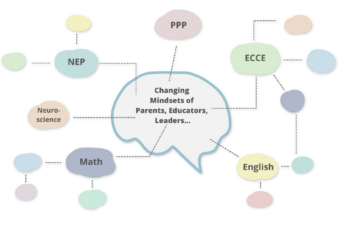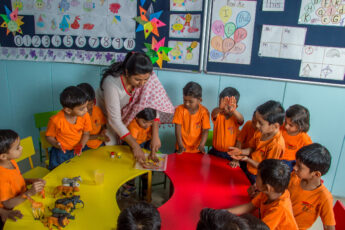Overcoming The Gendered Digital Divide Through Education In India
The gendered digital divide refers to the unequal distribution of access to and use of digital technologies by women and men. It is a multifaceted phenomenon rooted in the gender-based disadvantages women face in many areas of life, including economic power, financial resources, social status, and political influence.
As a consequence of a robust patriarchal tradition and the low status of women in India, girls are often considered less important than boys by their families. However, gender disparities in educational attainment and technology access continue to persist. These gender disparities are particularly pronounced among youth from rural areas and low-income families, who face considerable obstacles regarding access to schools and quality education. In India, only 15% of women own a mobile phone, and 33% use internet services compared to men. In 2020, a quarter of all adult females owned a smartphone, compared to nearly half of all adult males.
Additionally, a new survey shows that the pandemic has further widened the gap between access to mobile phones and computers among young girls in India. According to UNESCO, over 158 million girls were affected by the closure of schools in India during the lockdown. This has intensified the already-existing gap in educational opportunities for young and adolescent girls.
How can Education Help?
Education has long been recognized as one of the most powerful tools for overcoming poverty and inequality. The emergence of open, digital platforms has presented the means to address the educational divide head-on. It is pivotal to creating opportunities for future generations and helps pave the way for upward social mobility.
However, the first step must come from political policymakers and politicians themselves. Political leaders must develop policies that will help girls from low-income families and those with fewer privileges than men to realise their full potential.
📌 Improving Digital Infrastructure for Women
Governments could offer free or low-cost distribution of ICT devices to women. Investing in women’s education, including training in digital skills, can have a social dividend for the nation since women with the right training make significant contributions to the economy. Just look at countries with high rates of ICT use, where men and women are on par when it comes to technological know-how and productivity.
📌 Advocating Women Education
Digital literacy classes are not enough, though. We also need to create systems and cultures that support women’s and girls’ long-term interests and success in technology. This means creating safe spaces to practice their skills without fear of harassment or discrimination. Schools should also encourage female students to be interested in computer programming & other technology-related subjects rather than discouraging them because of their gender.
📌 Better Workplace Environments
Encouraging women to join the workforce and providing support services for them to be able to both work and raise a family could go a long way toward solving the problem. It is also essential to combine employment possibilities with educational opportunities that promote the better distribution of unpaid care (childcare and housework) and training for lifelong learning.
The Bottom Line
Despite rapid growth in mobile penetration and digital access in India, women lag behind men in both these areas. Gender discrimination in technology, low level of internet access, and lack of digital literacy among women inhibit their ability to participate in the economy. By supporting women and enhancing their digital literacy and access, we can empower and enable them to fully participate in the creation of the next chapter of India’s growth story.
Our comprehensive range of programs help deepen digital access and equitability, empowering all stratas of society to realise their full potential through the transformative capabilities of EdTech. To know more, visit ecce.squarepanda.in




Leave a Comment